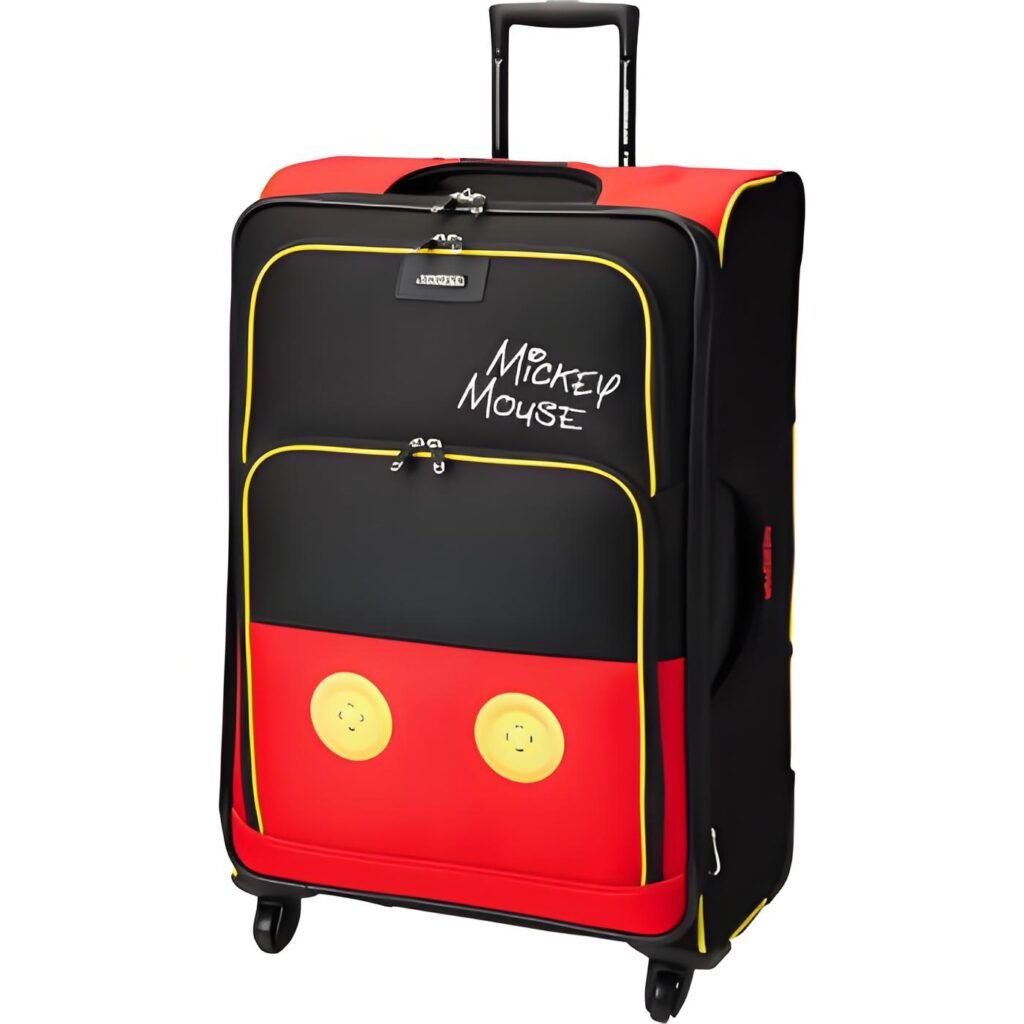Sewing PVC Patches onto Luggage: A Step-by-Step Guide to Personalizing Your Travel Companion
Luggage is more than just a functional item for transporting belongings—it’s a reflection of personal style and a companion on countless journeys. One of the most creative ways to customize luggage and make it stand out in a sea of generic suitcases is by sewing PVC patches onto its surface. PVC patches, known for their durability, vibrant designs, and weather-resistant properties, are ideal for travel gear. This comprehensive guide will walk you through the process of attaching PVC patches to luggage, covering materials, techniques, design inspiration, and maintenance tips.

1. Why Personalize Luggage with PVC Patches?
Before diving into the technical details, let’s explore the benefits of customizing luggage with PVC patches:
- Unique Identity: In crowded airports or baggage claims, personalized luggage is easier to spot.
- Durability: PVC patches are waterproof, fade-resistant, and can withstand rough handling.
- Storytelling: Patches can represent travel milestones, hobbies, or cultural interests (e.g., flags, landmarks, or vintage travel motifs).
- Repair and Reinforcement: Patches can cover scuffs or weak spots on older luggage while adding character.
- Cost-Effective Customization: Compared to buying designer luggage, sewing patches is an affordable way to refresh your travel gear.
2. Materials and Tools You’ll Need
To sew PVC patches onto luggage, gather the following supplies:
- PVC Patches: Choose patches with designs that resonate with your style (e.g., geometric patterns, travel icons, or custom logos).
- Luggage: Suitcases, duffel bags, or backpacks made of fabric, nylon, or leather. Avoid hard-shell polycarbonate luggage unless you plan to use adhesive patches.
- Heavy-Duty Needle: A thick, sharp needle designed for leather or denim (e.g., size 14–18).
- Strong Thread: Use polyester or nylon thread for longevity. Upholstery thread or dental floss (unflavored) are excellent alternatives.
- Scissors: For trimming thread and excess material.
- Pins or Fabric Glue: To temporarily secure patches in place.
- Thimble: Protects your fingers when pushing the needle through thick materials.
- Awl or Hole Punch: Optional, for pre-piercing holes in stiff fabrics or leather.
- Seam Sealant (Optional): To reinforce stitches and prevent fraying.
3. Preparing Your Luggage and Patches
A. Assess Luggage Material
Luggage materials vary widely, and each requires a slightly different approach:
- Soft-Shell Fabric (Nylon/Polyester): Easy to sew through but may require reinforcement to prevent tearing.
- Leather: Durable but requires pre-punched holes and a heavy-duty needle.
- Canvas: Thick and sturdy, ideal for patches but challenging to hand-sew.
B. Clean the Surface
Wipe the luggage with a damp cloth to remove dust or dirt. Let it dry completely before sewing.
C. Plan the Layout
Arrange patches on the luggage to visualize the final design. Consider:
- Balance and symmetry.
- Avoiding seams, zippers, or handles that could interfere with sewing.
- Using chalk or washable markers to mark placement.
4. Step-by-Step Sewing Process
Step 1: Secure the Patch Temporarily
Use pins or fabric glue to hold the patch in place. If using glue, apply sparingly to avoid residue.
Step 2: Thread the Needle
Cut a 24–30-inch thread and thread it through the needle. Double the thread for extra strength and tie a knot at the end.
Step 3: Start Sewing
- For Soft Fabrics: Begin from the inside of the luggage (if accessible) to hide the knot. Push the needle through the fabric and the edge of the patch.
- For Leather or Thick Materials: Use an awl to pre-punch holes along the patch’s perimeter to ease stitching.
Step 4: Choose a Stitch Type
- Whip Stitch: Ideal for most materials. Pass the needle over the edge of the patch and through the luggage in a looping motion.
- Backstitch: Provides maximum security. Insert the needle backward through the previous stitch before moving forward.
- Saddle Stitch (for Leather): Uses two needles working in opposite directions for even tension.
Step 5: Sew Around the Patch
Work slowly, ensuring stitches are evenly spaced (about 1/8 inch apart). Pull the thread firmly but avoid over-tightening, which can warp the patch.
Step 6: Knot and Secure the Thread
After completing the perimeter, make several small stitches in the same spot to lock the thread. Apply seam sealant to the knot for added durability.
Step 7: Inspect and Reinforce
Check for loose stitches or gaps. Add extra stitches to weak areas, especially if the luggage will undergo heavy use.
5. Advanced Techniques and Troubleshooting
A. Sewing on Curved Surfaces
For rounded luggage edges, use shorter stitches and flexible patches. Mold PVC patches with a hairdryer (on low heat) to conform to curves.
B. Layering Patches
Create dimension by sewing smaller patches atop larger ones. Ensure underlying stitches don’t interfere with the top layer.
C. Repairing Torn Luggage
Use large PVC patches to cover rips or worn areas. Sew around the damaged section and apply fabric glue underneath for extra hold.
D. Avoiding Common Mistakes
- Thread Tangling: Use shorter thread lengths and beeswax to reduce friction.
- Patch Bubbling: Secure the center of large patches with glue or a few anchor stitches.
- Needle Breakage: Replace needles frequently and use a thimble for tough materials.
6. Design Inspiration for Luggage Patches
- Travel-Themed Patches:
- Maps, airplanes, vintage luggage tags, or “Wanderlust” slogans.
- Country/city flags to showcase visited destinations.
- Personal Branding:
- Monograms, family crests, or custom logos.
- Patches with your name or social media handle for a unique touch.
- Pop Culture and Hobbies:
- Band logos, movie quotes, or sports team emblems.
- Patches representing hobbies like hiking, photography, or music.
- Abstract and Artistic Designs:
- Geometric shapes, splatter patterns, or neon accents for a modern look.
7. Maintaining Your Customized Luggage
- Cleaning:
- Wipe PVC patches with a damp cloth. Avoid abrasive cleaners.
- For fabric luggage, spot-clean around patches to prevent color bleeding.
- Storage:
- Keep luggage in a dry, cool place. Avoid prolonged sun exposure to prevent fading.
- Repairs:
- Re-sew loose patches immediately to prevent further damage.
- Replace worn-out thread or patches as needed.
8. Alternative Attachment Methods
If sewing isn’t feasible, consider these options:
- Adhesive Backing:
- Use heavy-duty fabric glue or PVC-compatible adhesive. Ideal for hard-shell luggage.
- Velcro Strips:
- Sew Velcro onto the luggage and attach patches with the opposite side. Allows for interchangeable designs.
- Snaps or Rivets:
- Metal snaps or decorative rivets offer a rugged, industrial look.
9. Case Study: Transforming a Vintage Suitcase
To illustrate the process, let’s explore revamping a 1980s leather suitcase:
- Design Concept: A retro travel theme with patches of vintage airlines, compasses, and postage stamps.
- Challenges: Hardened leather required pre-punched holes and a saddle stitch technique.
- Outcome: A one-of-a-kind piece that blends nostalgia with functionality.
10. Conclusion
Sewing PVC patches onto luggage is a rewarding way to merge practicality with self-expression. Whether you’re refreshing an old suitcase or personalizing a new one, this guide equips you with the knowledge to tackle the project confidently. By choosing durable materials, mastering key stitches, and embracing creativity, you’ll create a travel companion that’s as unique as your adventures.
So, grab your needle and thread—it’s time to turn your luggage into a canvas of stories waiting to be told!


